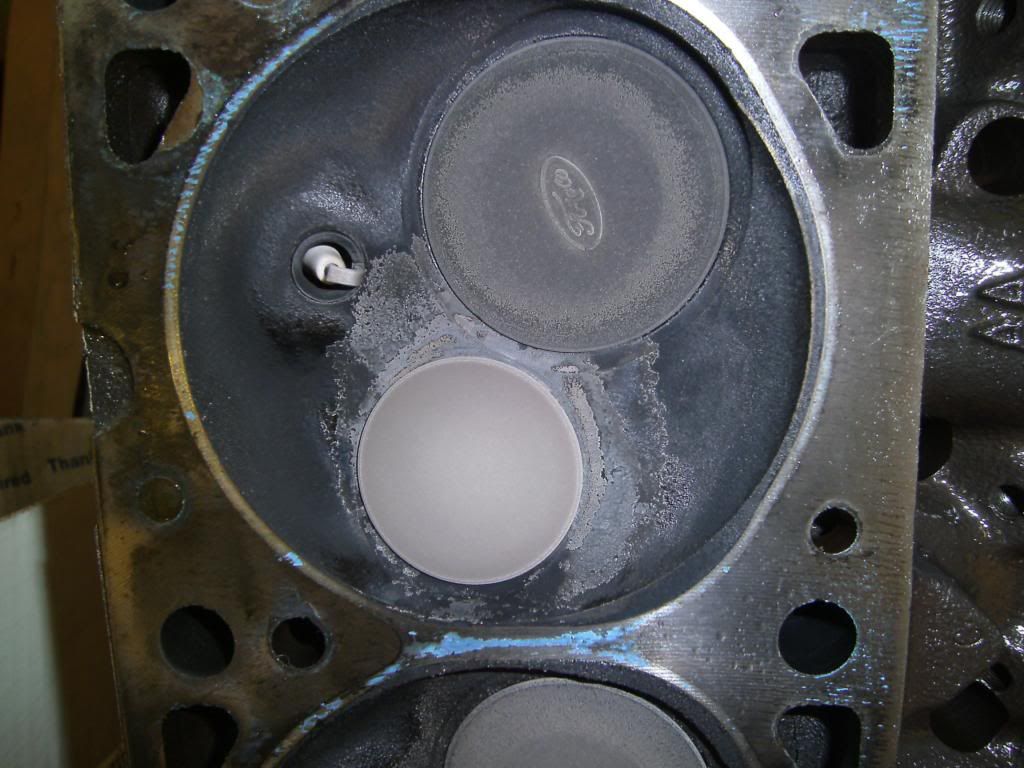quote:
Originally posted by T.Solo:
quote:
Originally posted by PanteraDoug:
It is entirely possible and most likely, when that engine was apart to go .020 over, the heads weren't torqued down properly.
The Clevelands need to be really tight on the head bolts.
Thanks Doug,
I noticed when removing the head bolts that the rear seemed to require less torque to remove. I theorized that the motor was rebuilt and sent down the road never having had the head bolts retorqued.
Today I'm going to clean up the deck surface and attempt to check for warpage as suggested. I'll report back on that.
I'm interested in replacing the cam since I'm this far into it. should I consider going hydraulic roller? Does this require machining? Is there any oiling modification required or that I should be considering with the top off the engine?
Steve
I am a believer in going as simple as possible. For most people, they don't need the benefits of a roller lifter camshaft.
In the past, the durability of those components has not been what it should have been.
The roller lifter assemblies are heavier and have more components to them to fail.
I would use an ordinary hydraulic lifter camshaft. With anti-pump up lifters and better springs. I used to turn mine to 7,200rpm with no problems.
The main advantage to the roller lifter is that you can use a more radical camshaft profile and have a close to stock idle.
To me, there is always a price to pay, or a trade off if you prefer that term. The trade off to a roller is less expected life out of the valve train, and if it breaks in the middle of nowhere, then make sure you at least have cell phone connection?
The trade off to a hydraulic lifter cam generally is less upper rpm available. Text book would be about 6,500 rpm upper limit.
You can go with triple spring like I had but the there is a trade off to that as well.
I now run solid lifter cams. It is simpler.
Considering the amount of pitting that I see in your photos, it could be that the heads were sanded down with 60 grit paper and put on.
That should show on the surface using even a simple straight edge like a carpenters framing square as a "not flat surface".
The blue Fel-pro head gaskets are good, but not that good to positively seal the low spots.
You can have those heads "resurfaced" pretty cheap, without taking them apart. Shops do that all the time.
I'd strongly recommend that to you if you are going to reuse those heads.
Chances are the block was resurfaced when they did the .020 over bore. It usually is?
Wipe down the surfaces of the block with a solvent to make sure that all traces of the old head gaskets and oil are gone, and DO NOT sand it with anything at all.
The Cleveland heads need to be re-torqued after at least one run where the engine gets nice and hot, then is allowed to cool all the way down, like overnight. Check the intake manifold bolts too. Guaranty they loosen up.
Then go back and check the head bolts that they are at 110 ft-lbs.
Once you do that, it will set the gaskets permanently there and the bolts won't loosen up any more.
Theoretically those head gaskets are one torque cold, but not so in my experiences.
What you have experienced is what happens if YOU DON'T DO THAT. It just makes a problem down the road.
Do it right the first time and you won't ever have to do it again.
Put new head bolts in, AND MAKE SURE YOU RUN A TAP IN THE BLOCK
AND CLEAN OUT THE DEBRIS THE TAP SHAVED OUT! Then you'll be good to go.
Incidentally, Chevies don't take that much torque on the head bolts. GM uses a softer grade of cast iron then Ford and that much torque warps the block and heads. Ford uses nodular iron on just about everything.
That's one reason that hardened valve seats get recommended for heads using todays pump gas, i.e., that the seats are too soft, but that really doesn't apply to Fords, just Chebbies and the other also ran GM's.
You have to keep Chevy guys away from Fords. They think they know everything?





